Prune a Lavender: [Dates, Tools and Ways to Do It]
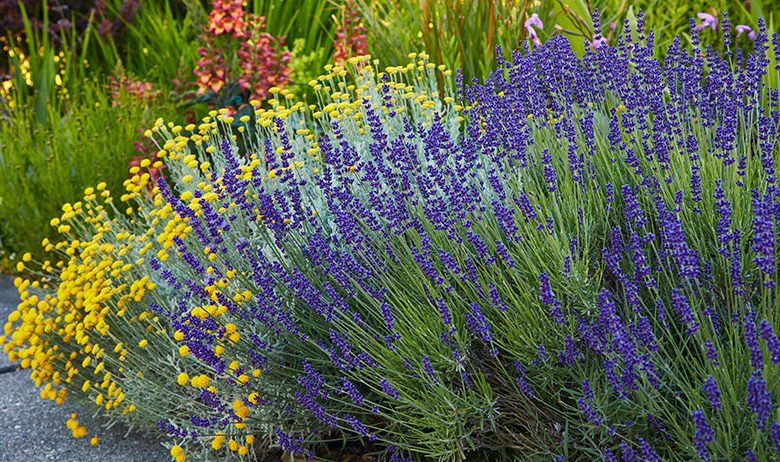
Lavender: a resistant, aromatic and ornamental plant.
Ideal for dry locations and one of the longest flowering shrubs, (Lavandula) would earn a place in most sunny gardens, even if it didn’t smell so heavenly.
Good news: Lavender is easy to prune, and when you do, you’ll be covered for the rest of the day in those spectacular scented oils. When it comes time to prune lavender, tailor the process to the age and variety of the plant.
When to carry out lavender pruning?
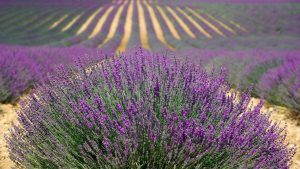 The best time to prune lavender is after it has bloomed, but this plant is very hardy.
The best time to prune lavender is after it has bloomed, but this plant is very hardy.
All lavenders bloom on stems that grew during the current year. This means that pruning can be done in early to mid spring without sacrificing the flowers of the moment.
Spring pruning can delay flowering, which may be your preference, and is a good time to remove dead patches and shorten shoot growth.
Pruning in late summer or early fall before the first frost encourages good air circulation, which prevents rot. So if you have the time, pruning twice a year can be helpful for your lavender.
Prune a lavender: How do we start?
Prune young lavender plants
 Start pruning lavender plants while they are still young.
Start pruning lavender plants while they are still young.
Start by pinching off the tips of new growth, so a young plant can respond with dense branching to help form good shape and plenty of flourishing growth to work with as it matures.
Waiting to prune will cause the plant to form woody growth that may not form as well.
Prune established lavender plants
Heavily prune established lavender, cutting back all stems by at least a third after the plant has finished blooming for the season.
Lavender in full sun can be expected to grow vigorously each year, so take this opportunity to reform your plants into the green mounds that are lavender’s characteristic shape.
You can use hand pruners or pruning shears. Shears are less precise than manual pruners, but they save time and are a must if you’re creating or maintaining a lavender hedge.
Pruning old lavenders
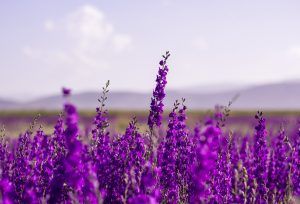 Continue to heavily prune old plants, but don’t cut them down for leafless wood.
Continue to heavily prune old plants, but don’t cut them down for leafless wood.
You can’t rejuvenate plants by cutting into old wood, but you can try to rejuvenate them by pruning at points just above the wood.
A good rule of thumb is to count to the third node (raised bump from which leaves grow) above the woody part, and then cut just above it. If you’re lucky, all three nodes, as well as some hidden nodes buried in the wood, will wake up and grow for you.
Prune a lavender step by step
- Look for the wood: Find the woody base of your lavender plant, that’s where the soft green growth meets the woody stem.
- Prune soft growth: Follow the stem 7-8 centimeters from the woody part of the stem that is marked in the illustration and remove the rest.
- Shape the plant: To keep the lavender growing in a neat mounding habit, prune the lavender stems as shown in the illustration with the outer stems lower than the middle.
Prune some specific species of lavender
Identifying your variety of lavender and tailoring your pruning to that type will help you get even more bang for your buck. There are three common types of lavender:
Lavandula angustifolia
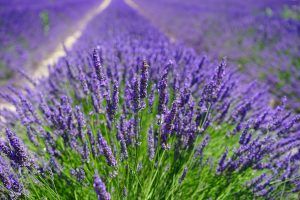 English lavender comes in many varieties, including «Hidcote» and «Munstead.»
English lavender comes in many varieties, including «Hidcote» and «Munstead.»
This lavender has single leafless stems and compact flower tips. It is generally low growing and has a compact, mound-like shape. English lavender blooms from late spring to early summer.
If lightly pruned just after its first bloom, it is likely to bloom again in late summer. After this second bloom, a thorough pruning, typically in late August, will prepare it for winter and encourage more flowers in the spring.
Lavandin x intermediate
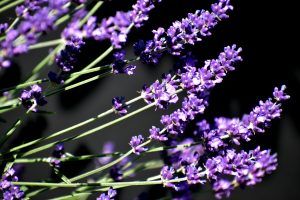 This hybrid of English Lavandin and Spike Lavandin also has many varieties.
This hybrid of English Lavandin and Spike Lavandin also has many varieties.
The most common are ‘Grosso’, ‘Provence’ and ‘Hidcote Gigante’. Its stems are branched and longer than those of English lavender.
The flower spikes are also longer, and have a graceful sharp taper. Lavandins are mound-shaped and are usually larger than English lavender.
And the long stems tend to fan out from the center. Lavandins flower in mid to late summer, and a thorough pruning after the long blooming season will prepare the plant for winter.
Due to the long stems, it may be necessary to prune down to half the size of the plant.
lavender stoechas
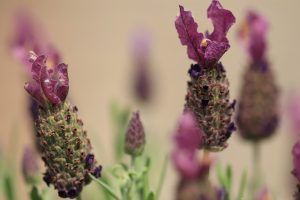 Sometimes called Spanish or French lavender, it is the least hardy of the lavenders.
Sometimes called Spanish or French lavender, it is the least hardy of the lavenders.
And it blooms earlier in the spring.
Spanish lavender has a short, full-flowered spike with open petals at the top, distinguishing it from other types. Due to its fragility, prune this lavender lightly, never too close to the base, just after the first bloom.
Then, follow up with a gentle removal of spent blooms and shape it for the rest of the season. A slightly more vigorous pruning can be done in late August to prepare the plant for winter and encourage a fuller plant in the spring.
working with lavender
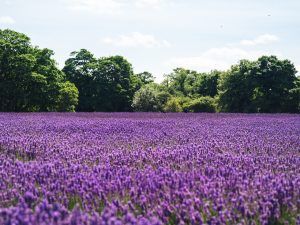 Lavender is considered a perennial-looking plant because most of its growth is soft and green, but the older base stems turn into wood. Knowing this detail will help you prune lavender.
Lavender is considered a perennial-looking plant because most of its growth is soft and green, but the older base stems turn into wood. Knowing this detail will help you prune lavender.
Deep in the center of the semi-shrub, the lavender plant is trying to turn into wood. One of the objectives of lavender pruning is to stop this transformation for several reasons:
- Lavender wood is very weak and prone to splitting due to snow, ice, and rot.
- Lavender has shallow roots, which means the roots are more susceptible to rot and premature death from too much moisture.
- Regular pruning encourages root growth, especially during the winter months, when the plant stores energy in the roots. A strong root system is essential for a lavender plant to thrive for many years.
- Unlike many true shrubs and trees, the wood that forms on lavender does not generally rejuvenate. Old wood will stop producing new shoots or will produce sparse shoots, which will detract from the overall appearance of the plant.
Extra tips on pruning lavender
Pruning is generally necessary for the health of a lavender plant. Not pruning allows a plant to grow considerably, become woody, and form corners that trap water.
This carries several dangers:
- In summer, trapped water promotes rot in lavender’s weak stems and wood.
- In late fall, trapped water promotes an early frost, ending the growing season prematurely.
- In winter, the trapped water can freeze, easily splitting the woody parts. In addition, a dense or spreading woody plant is especially vulnerable to snow loads, which can deform or break plants.
So keep an eye on your lavender plant throughout the seasons, and remove any parts that might cause problems.
- Lavender Care: [Soil, Humidity, Pruning and Problems]
- Differences between Lavender and Lavender: What are they?
- Lavender Cuttings in Spring: [Grafts, Time, Rooting and Planting]
- Lavender Cuttings: [Concept, Time, Rooting and Planting]
- Lavender Pests and Diseases: [Detection, Causes and Solutions]
- Prune Lavender: [Importance, Season, Tools, Considerations and Steps]

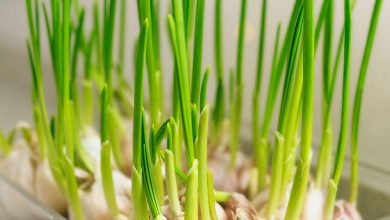
![Photo of Jade Plant: [Cultivation, Irrigation, Associations, Pests and Diseases]](https://www.complete-gardening.com/wp-content/uploads/2022/08/jade-plant-cultivation-irrigation-associations-pests-and-diseases-390x220.jpg)
![Photo of [11] Anti-Mosquito Plants: Herbs, Ornamentals and Carnivores](https://www.complete-gardening.com/wp-content/uploads/2022/08/11-anti-mosquito-plants-herbs-ornamentals-and-carnivores-390x220.jpg)
